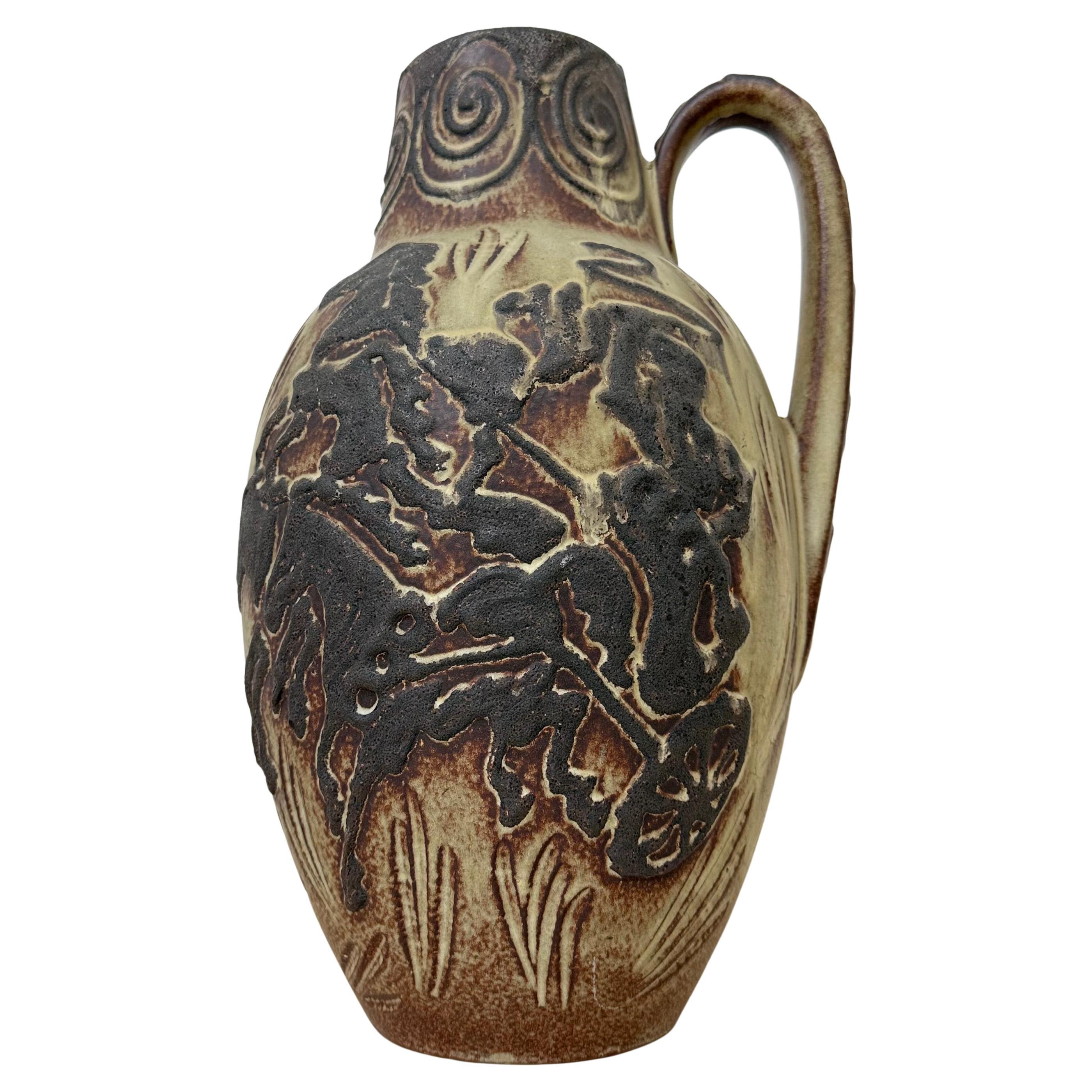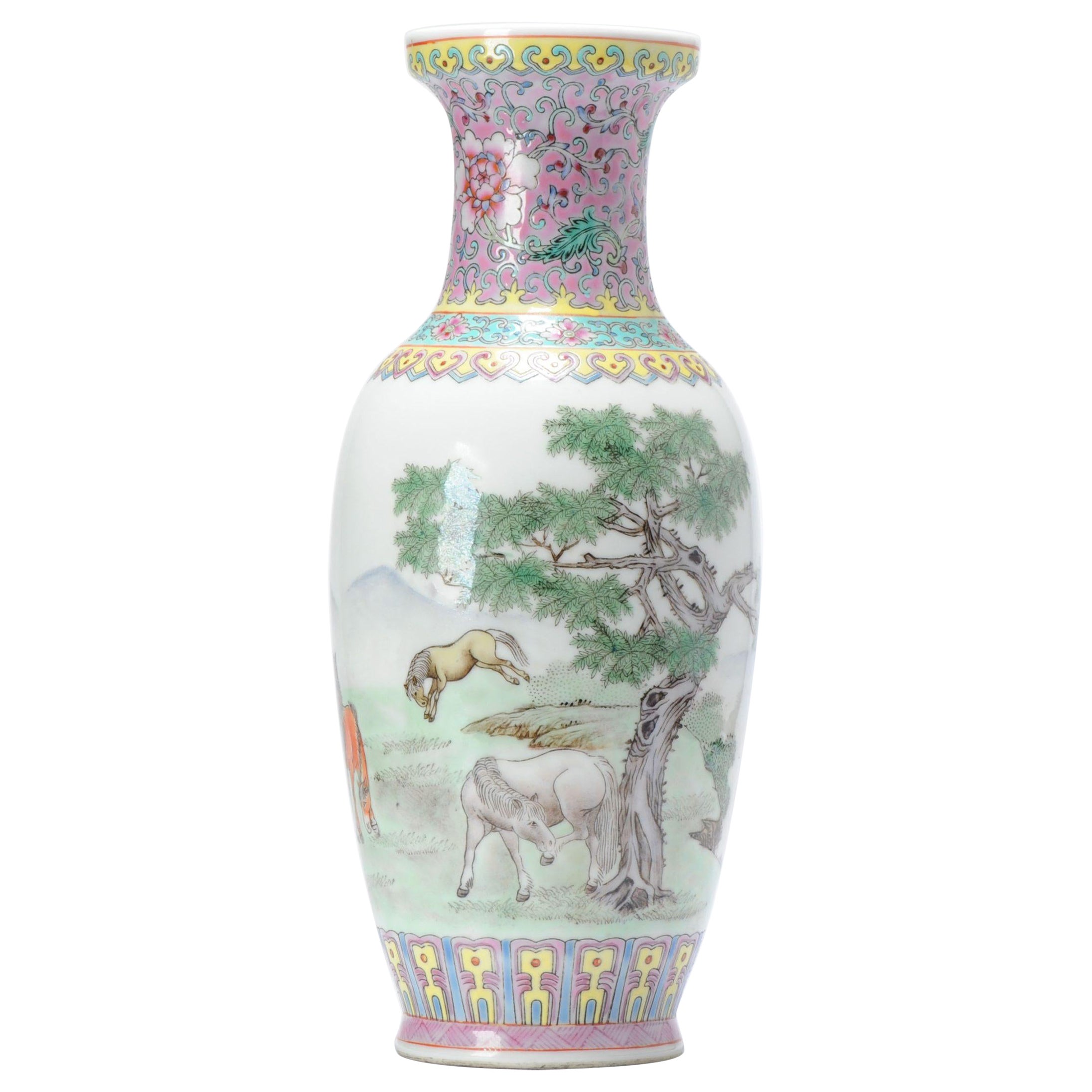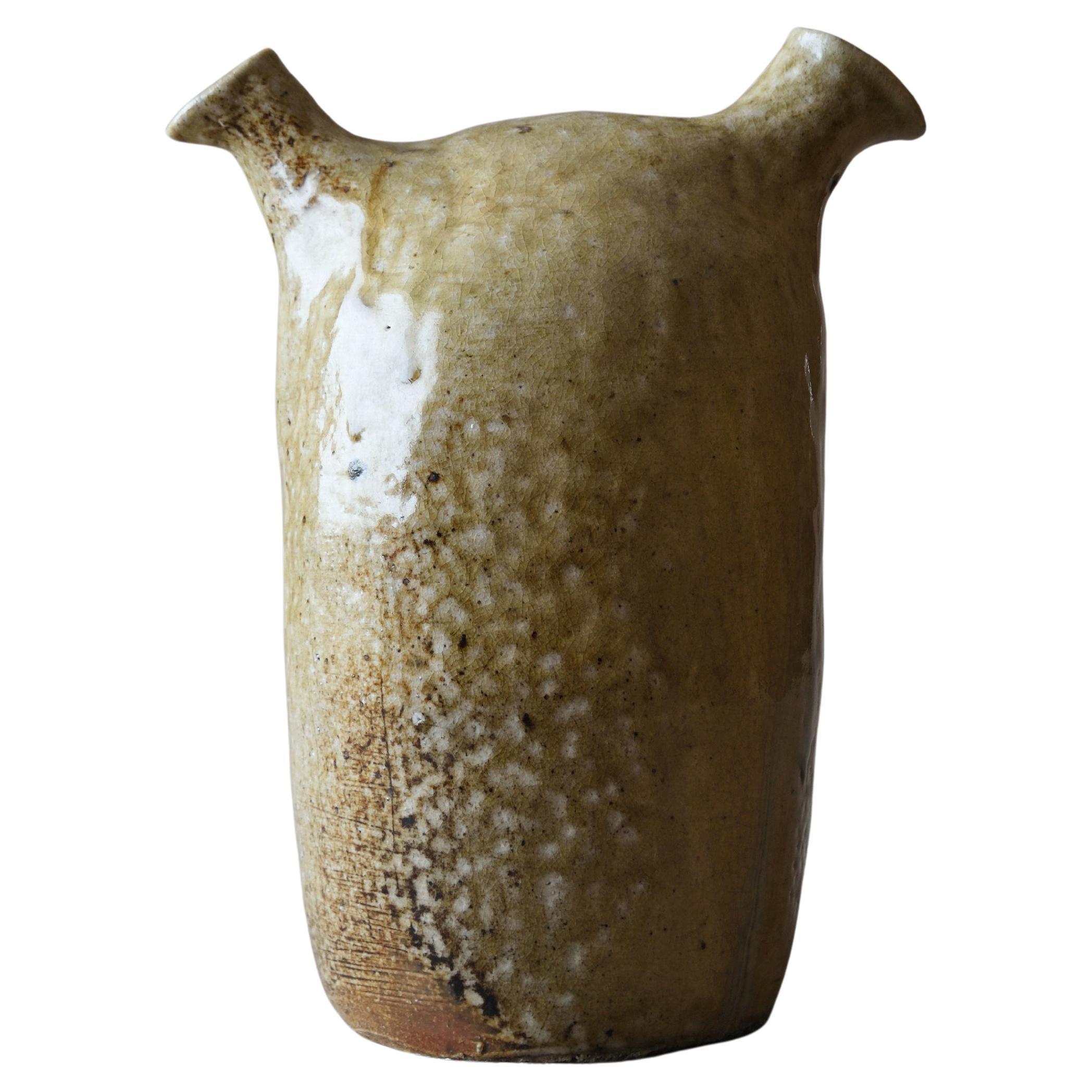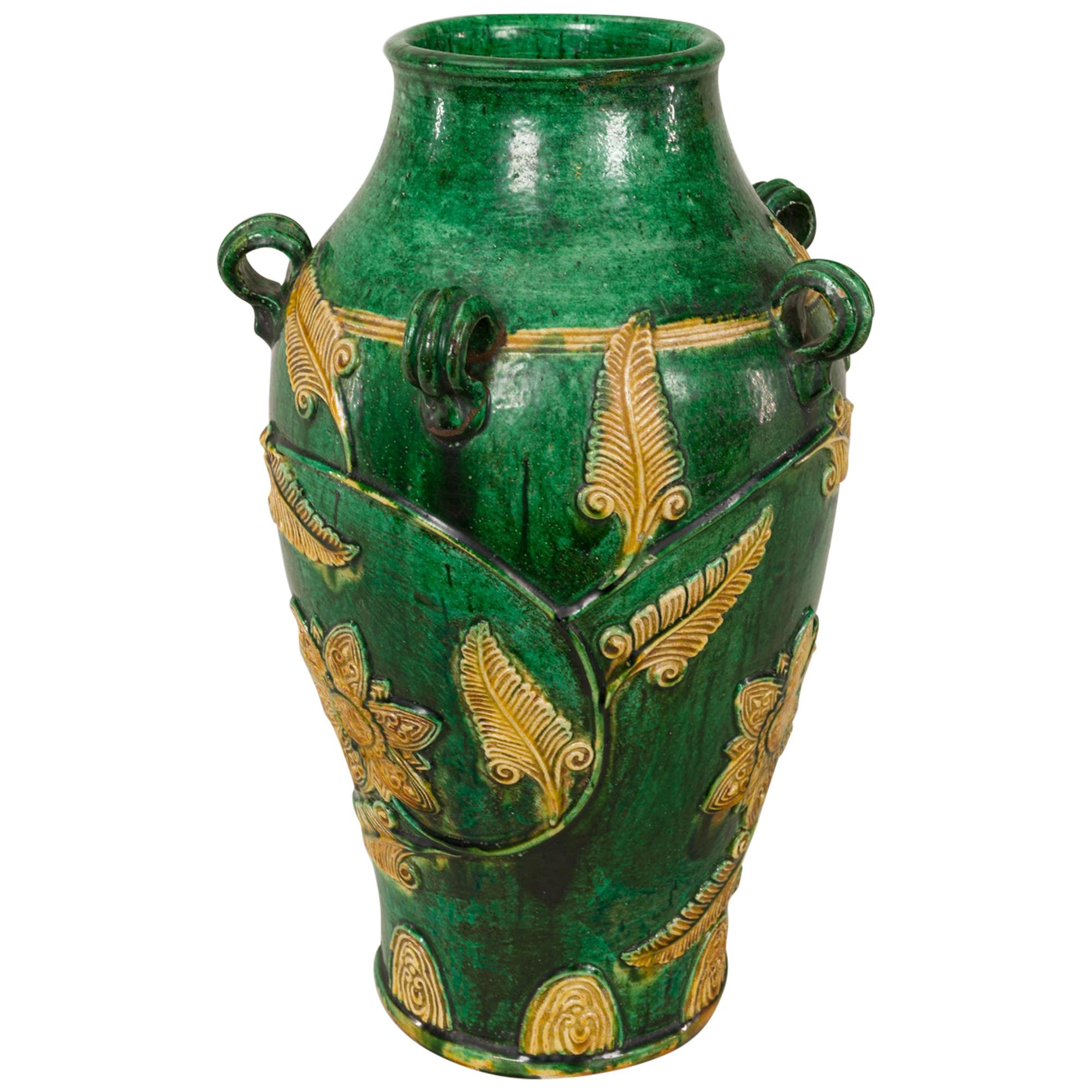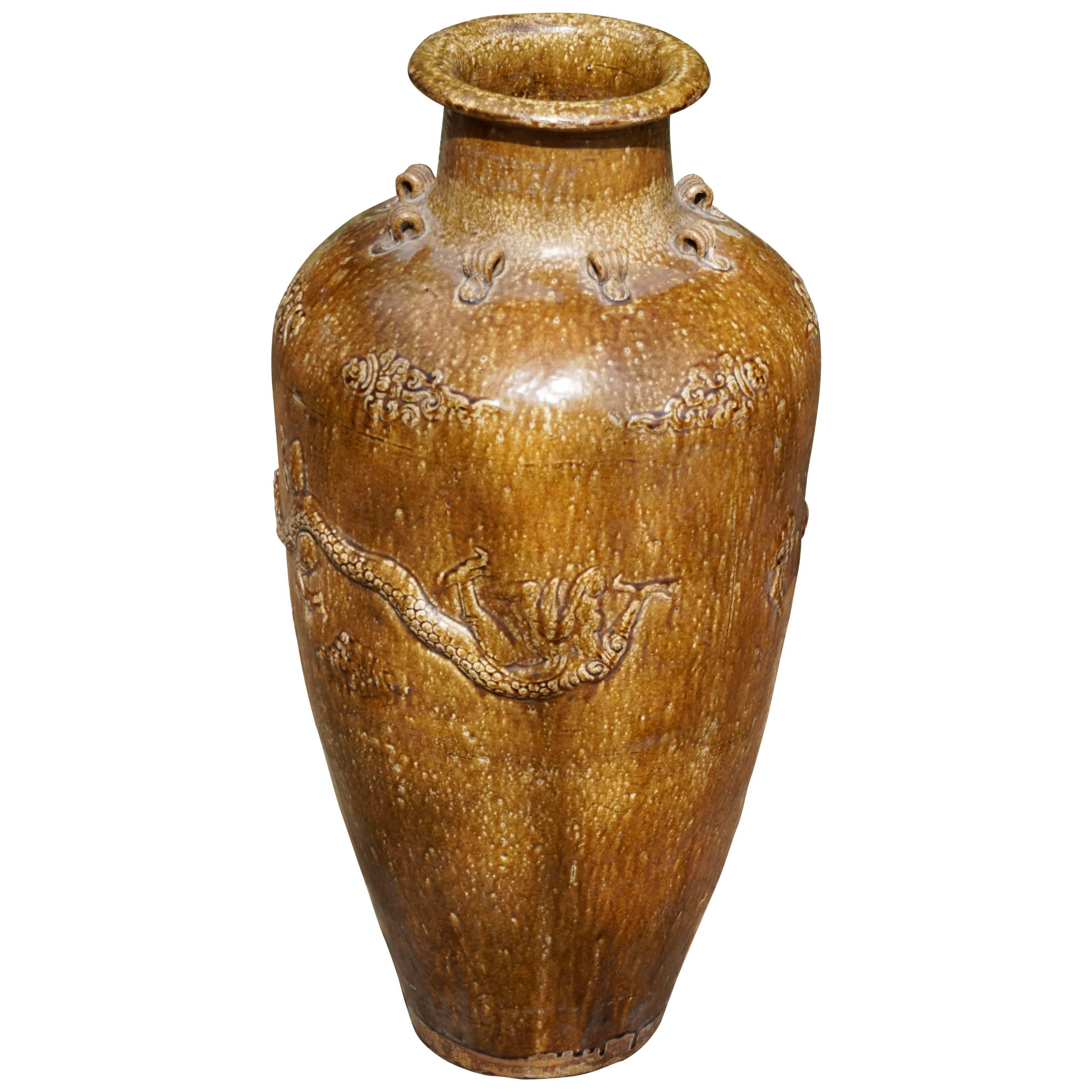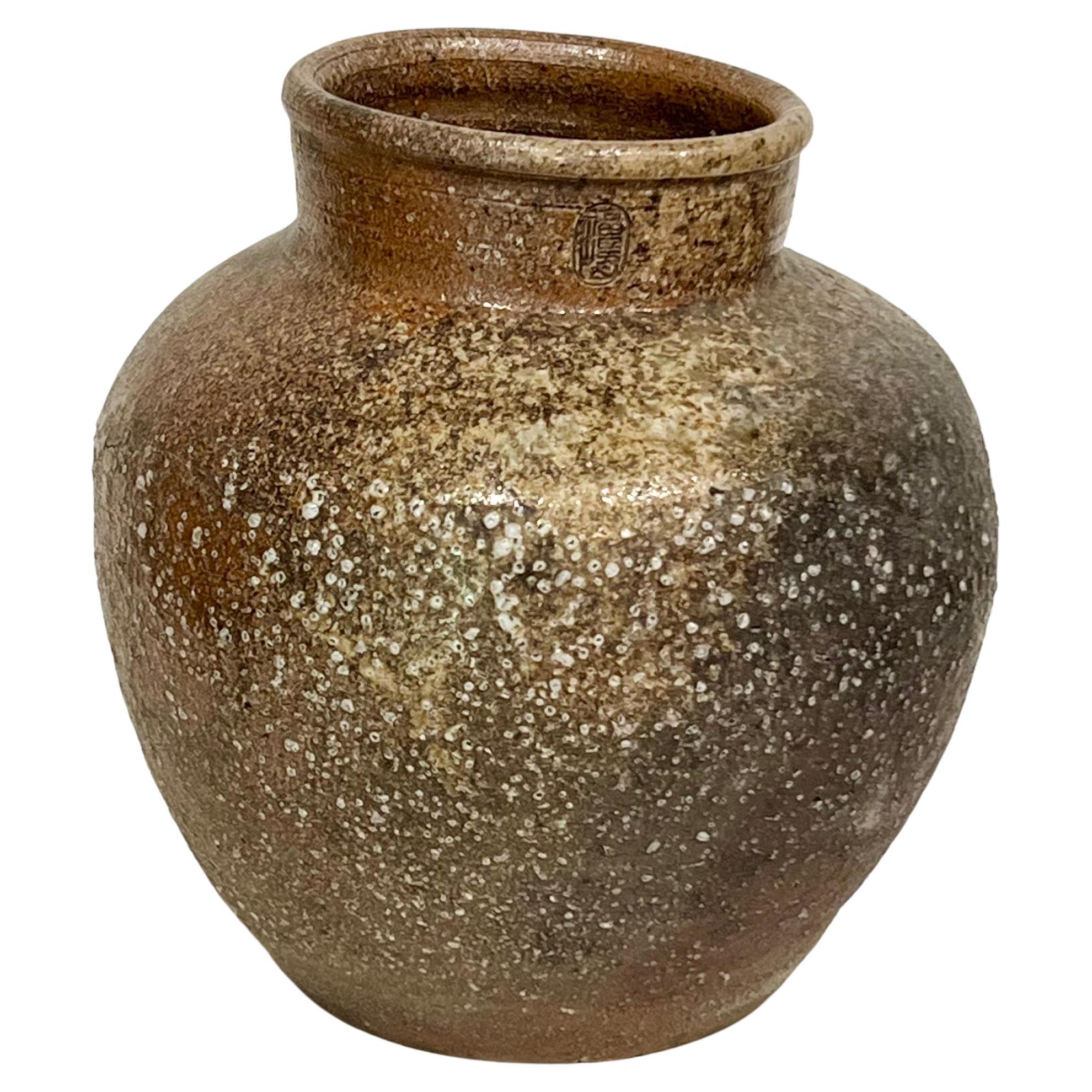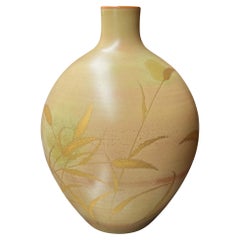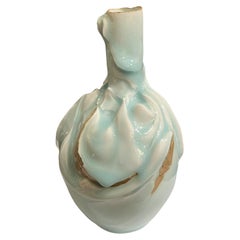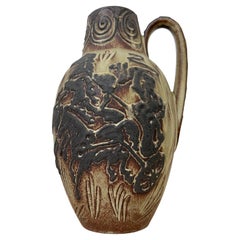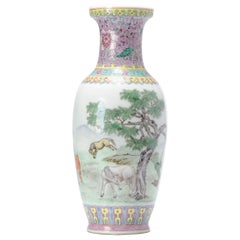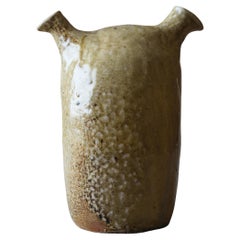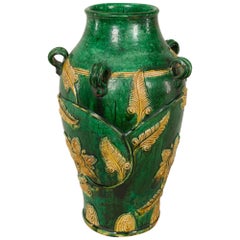Items Similar to Japanese Ceramic Vase with Horses, Somayaki, Japan circa 1830
Want more images or videos?
Request additional images or videos from the seller
1 of 10
Japanese Ceramic Vase with Horses, Somayaki, Japan circa 1830
$1,245.65
$1,557.0620% Off
£923.09
£1,153.8720% Off
€1,040
€1,30020% Off
CA$1,700.55
CA$2,125.6920% Off
A$1,891.79
A$2,364.7420% Off
CHF 991.70
CHF 1,239.6320% Off
MX$23,117.21
MX$28,896.5220% Off
NOK 12,628.06
NOK 15,785.0820% Off
SEK 11,887.57
SEK 14,859.4720% Off
DKK 7,918.47
DKK 9,898.0920% Off
Shipping
Retrieving quote...The 1stDibs Promise:
Authenticity Guarantee,
Money-Back Guarantee,
24-Hour Cancellation
About the Item
Japanese Ceramic Vase with Horses, Somayaki, Japan circa 1830
This rare two-handled baluster vase from the late Edo period is a typical example of Ōbori Sōma pottery. Its surface features hand-painted decoration depicting two horses, represented in the hidari-uma style, meaning “oriented to the left,” a symbol of exceptionality and good fortune, which can be interpreted as “having no equal.”
The horses are painted fluidly—one in white, the other in brown—and are depicted stationary in a style characteristic of the Kanō School, which blends pictorial tradition with fluidity.
The vase’s upper glaze, with a slightly greenish tint, reflects the use of celadon glazing techniques, also characteristic of this production. The back of the vase features stylized scrollwork.
The stoneware body of this vase also reveals masterful craftsmanship in wheel-throwing.
Ōbori Sōma Ware traces its origins back to the late 17th century in the present-day region of Namie, Fukushima, known for its horses. In 1690, Hangai Kyūkan, a vassal of the Nakamura clan, discovered suitable clays in Ōbori and instructed his servant Sama to produce ceramic utensils for daily use. Thus began the tradition of this pottery, initially called simply Sōma Ware. During this early period, the ceramics were primarily utilitarian, but the introduction of motifs, particularly horse-related ones, dates to the early 19th century, thanks to Hantani Takisaburō. He specialized in ceramic painting, popularizing horse designs that reflected the equestrian traditions of the Sōma family.
Typically, these ceramics are adorned with a single galloping horse, a motif still used today. The double stationary horse design, as seen on this vase, is exceedingly rare and corresponds to the early phase of horse-decorated production.
During the Edo period, these pieces were highly valued for their quality and symbolism. The pottery was further distinguished by the patronage of local lords, who authorized the use of their crest, representing a horse, thereby enhancing the renown of these creations. However, during the Meiji era, with industrialization and the rise of mass-produced ceramics, this tradition nearly vanished before experiencing a revival after World War II.
Dimensions: 32 x 19 x 15 cm.
- Dimensions:Height: 12.6 in (32 cm)Width: 7.49 in (19 cm)Depth: 5.91 in (15 cm)
- Materials and Techniques:
- Place of Origin:
- Period:
- Date of Manufacture:1830
- Condition:
- Seller Location:PARIS, FR
- Reference Number:1stDibs: LU6491242445252
About the Seller
5.0
Recognized Seller
These prestigious sellers are industry leaders and represent the highest echelon for item quality and design.
Established in 1982
1stDibs seller since 2022
6 sales on 1stDibs
- ShippingRetrieving quote...Shipping from: PARIS, France
- Return Policy
Authenticity Guarantee
In the unlikely event there’s an issue with an item’s authenticity, contact us within 1 year for a full refund. DetailsMoney-Back Guarantee
If your item is not as described, is damaged in transit, or does not arrive, contact us within 7 days for a full refund. Details24-Hour Cancellation
You have a 24-hour grace period in which to reconsider your purchase, with no questions asked.Vetted Professional Sellers
Our world-class sellers must adhere to strict standards for service and quality, maintaining the integrity of our listings.Price-Match Guarantee
If you find that a seller listed the same item for a lower price elsewhere, we’ll match it.Trusted Global Delivery
Our best-in-class carrier network provides specialized shipping options worldwide, including custom delivery.More From This Seller
View AllJapan, Porcelain vase by Inoue Haruo 1910- 1975
Located in PARIS, FR
This porcelain vase, created by Inoue Haruo, embodies the elegance and finesse of Kyoto ceramics. Its spherical shape softened by harmonious curves, is topped with a slightly flared ...
Category
Mid-20th Century Japanese Vases
Materials
Porcelain
Large Korean Celadon Ceramic vase, Korea, 19th
Located in PARIS, FR
A large Korean celadon vase with decor of flying cranes and clouds.
Some firing defects as usual in this kind of ceramic but no chips and no hairli...
Category
Antique 19th Century Korean Vases
Materials
Ceramic
$3,066 Sale Price
20% Off
Seiyakuji Porcelain Vase with Silver Inlay by Yoji Kato, Japan, circa 1990
Located in PARIS, FR
Seiyakuji Porcelain Vase with Silver Inlay by Yoji Kato (加藤洋二)
This contemporary Japanese vase by Yoji Kato stands 20.5 cm tall and is crafted from Seiyakuji porcelain, renowned for...
Category
Late 20th Century Japanese Vases
Materials
Porcelain
Japan, Rare Vase by Kanzan Shinkai, born in 1912
Located in PARIS, FR
Vase by Kanzan Shinkai,born in 1912
This vase is a fine example of Kanzan Shinkai's work. It features an intricate design, with raised circular patterns, using contrasting colors suc...
Category
Mid-20th Century Japanese Vases
Materials
Ceramic
Japan, Spectacular Ceramic Vase by Akira Arakawa circa 2000
Located in PARIS, FR
Akira Arakawa, born in 1950 in Hamamatsu and a graduate of Kokushikan University’s Department of Architecture, has carved a unique path in Japanese ceramics. Although trained in architecture, he is a self-taught ceramic artist, renowned for his exceptional mastery of crystallized glazes. This intricate technique demands precise temperature control, reaching extreme levels of 1250°C to 1300°C to melt the glaze components thoroughly. As the temperature slowly decreases, crystals emerge, forming delicate flower or snowflake patterns on the glazed surface. By adding zinc or rutile, Arakawa can manipulate the size and shape of these crystals.
This meticulous process results in captivating works like this deeply carved vase, where blue crystals stand out against earthy backgrounds, creating striking contrasts between crystallized and vitrified areas. Arakawa’s technical excellence has earned him numerous accolades, particularly in Japan’s ceramic competitions and exhibitions.
Arakawa’s work has been featured in prestigious events, including multiple selections for the Nissin Noodle Bowl...
Category
Early 2000s Japanese Modern Vases
Materials
Ceramic
$1,389 Sale Price
20% Off
Large Vintage Hand painted Japanese porcelain vase with gold flowers, circa 1960
Located in PARIS, FR
Spectacular Vintage Japanese Porcelain Vase with underglaze Gold Leaf
This vintage Japanese porcelain vase is a true marvel, adorned ...
Category
20th Century Japanese Vases
Materials
Porcelain
$898 Sale Price
37% Off
Free Shipping
You May Also Like
Vintage Scheurich west Germany vase with horse decor , 1970s
By Scheurich Keramik
Located in Delft, NL
Vintage Scheurich west Germany vase with horse decor , 1970s
Category
Vintage 1970s German Mid-Century Modern Vases
Materials
Ceramic
Vintage Chinese Porcelain PROC Vase with Scene of Horses, China, 1989 or Earlier
Located in Amsterdam, Noord Holland
A polychrome porcelain vase, decorated with horses. Marked a seal mark at the base. China, 20th century.
Very nice and unusual scene.
Additional information:
Material: Porcelain & P...
Category
20th Century Chinese Vases
Materials
Porcelain
20th century Japanese vintage modern pottery vase with two spouts
Located in Chiba, JP
DOUBLE-MOUTHED VASE – Japanese vintage modern pottery vase with two spouts, Showa period, 20th century, approx. H 23 x W 18 x D 11cm (9.05 x 7.08 x 4.33in). Unidentified potter’s car...
Category
Late 20th Century Japanese Ceramics
Materials
Ceramic
18th Century Japanese Gennai Ware Vase
Located in Hudson, NY
18th century Japanese Gennai Ware vase, known for its bright coloring, Gennai Ware was produced by Hiraga Gennai (1728-1780), a scientist and intellectual who lived in what is now Shido, Kagawa Prefecture. Gennai Ware is stylistically similar to Kochi Ware which is an early Chinese pottery...
Category
Antique 18th Century Japanese Edo Ceramics
Materials
Ceramic
Large Chinese Martaban Ming Dynasty Stoneware Storage Vase with Dragons
Located in Dallas, TX
Large Martaban Ming dynasty stoneware storage vase with dragons, 14th century. Beautiful Ochoa and yellow brown glaze with decorated dragons and Ming clouds. Applied snail or dragon ...
Category
Antique 15th Century and Earlier Chinese Ming Jars
Materials
Stoneware
Japanese Shigaraki Vase Early 19th Century
Located in Oakland, CA
Absolutely beautiful antique Japanese shigaraki vessel from the early 19th century. Has the family crest stamped into the neck of the piece. Artist marking on the bottom. Tokugawa era.
Category
Antique Early 19th Century Japanese Meiji Vases
Materials
Clay
More Ways To Browse
17th Century Horse
Antique Stationary
Antique Japanese Stoneware
17th Century Japanese Paintings
Japanese Celadon
Double Handle Pottery
Antique White Hall Stoneware
Antique Celadon Pottery
Double Clay Vessel
Japanese Celadon Vase
Japanese Horse Painting
Sama Dining
17th Century Kano
Meiji Celadon
Celadon Horses
Art Deco Jade Vases
Bacchus Mask
Brutalist Glass Vase
